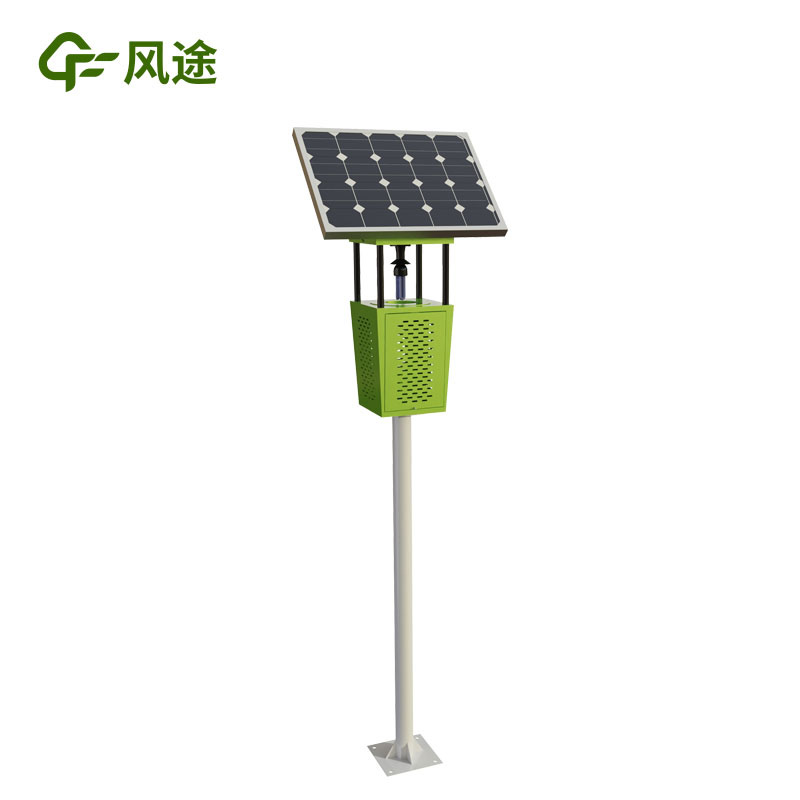Tianqiong Sensor IOT Technology Co., Ltd
Sales Manager:Ms. Emily Wang
Cel,Whatsapp,Wechat:+86 15898932201
Email:info@fengtutec.com
Add:No. 155 Optoelectronic Industry Accelerator, Gaoxin District, Weifang, Shandong, China

Sales Manager:Ms. Emily Wang
Cel,Whatsapp,Wechat:+86 15898932201
Email:info@fengtutec.com
Add:No. 155 Optoelectronic Industry Accelerator, Gaoxin District, Weifang, Shandong, China
time:2025-03-25 10:13:07 source:Weather Station viewed:188 time
With the increasing demand for ecological protection and sustainable development in modern agriculture, the environmental pollution and pest resistance caused by the overuse of traditional chemical pesticides urgently need to be addressed. Physical pest control methods have gradually become an important supplement due to their environmental friendliness and safety. Among them, insecticidal lamps, which attract and kill pests by simulating their phototaxis, can reduce reliance on pesticides and have become a core tool in modern green pest control systems. Currently, mainstream insecticidal lamps can be divided into three categories based on their working principles and application scenarios: High Altitude Pest Lights, Frequency-Vibration Insecticidal Lamps, and Air Suction Insecticide Lamps.
1. High Altitude Pest Lights
High Altitude Pest Lights are specifically designed to control migratory pests (such as fall armyworms and moths), with their core feature being the use of high-intensity light sources to attract pests at high altitudes and eliminate them through physical means.
Working Principle:
They use metal halide lamps or sodium lamps to emit specific wavelengths of light (e.g., 365nm ultraviolet light), covering a range of 500-1000 meters in altitude, combined with high-voltage grids or sticky traps for capture.
Advantages:
They offer wide-area coverage, making them suitable for large-scale farmland or orchards. Integrated with intelligent control systems (light control, time control, rain control) and remote management functions, they enhance pest control efficiency.
Application:
They are mostly deployed in the migratory paths of pests, such as farmland boundaries or orchard perimeters, to block pest dispersal.
2. Frequency-Vibration Insecticidal Lamps
Frequency-Vibration Insecticidal Lamps attract and kill pests through the synergistic effects of light waves and sound waves, offering both broad-spectrum and precise pest control.
Working Principle:
They release specific frequencies of light waves (e.g., 365±50nm) to simulate pest mating signals, combined with high-voltage grids for electrocution.
Advantages:
They are energy-efficient, have a long lifespan, and are highly effective against pests such as Lepidoptera (e.g., cotton bollworms) and Coleoptera (e.g., scarab beetles). They support solar power, making them suitable for areas without grid coverage.
Application:
They are widely used in open farmland, vegetable bases, and forestry, especially in scenarios requiring long-term continuous pest monitoring.
3. Air Suction Insecticide Lamps
Air Suction Insecticide Lamps are designed for small pests (such as aphids and whiteflies), enhancing capture efficiency through wind power.
Working Principle:
They use ultraviolet light sources to attract pests, combined with high-speed fans to generate negative pressure airflow, sucking pests into a collection container where they are dehydrated and killed.
Advantages:
They have high capture efficiency, reducing pest escape rates. Their compact structure makes them easy to clean, suitable for high-density planting environments (e.g., greenhouses, vertical farms).
Application:
They are mainly used in facility agriculture, home gardening, and storage environments, providing precise control of local pest densities.
Conclusion
High Altitude Pest Lights, Frequency-Vibration Insecticidal Lamps, and Air Suction Insecticide Lamps target pests in different ecological niches, forming a multi-dimensional pest control system. High-altitude lamps focus on intercepting migratory pests over wide areas, frequency-vibration lamps emphasize broad-spectrum pest control and ecological balance, while air suction lamps excel in eliminating small pests. Together, they provide comprehensive and sustainable solutions for modern agricultural pest management.

The Ultrasonic weather station integrates various sensors with different functions, such as sensors for measuring wind speed and direction, sensors for detecting temperature and humidity, and sensors for recording rainfall, etc., all in the same device. This design makes the structure of the weather...
An ultrasonic weather station is a modern meteorological monitoring device designed based on the principles of ultrasonics. It measures atmospheric parameters to provide real-time and accurate weather data for environmental monitoring, agriculture, urban management, and other fields. Compared to tra...
Combustion is a common energy conversion method.During combustion, flue gas is emitted. Analyzing its composition—primarily components like oxygen, carbon monoxide (CO), and carbon dioxide (CO₂)—helps determine if combustion is complete and calculate combustion efficiency.The level of combustion...
The "data brain" in farm fields is quietly changing the agricultural production model that has relied on "weather-dependent farming" for thousands of years.In traditional agricultural production, farmers mostly rely on experience to judge agricultural activities. However, as clim...